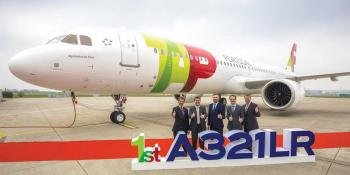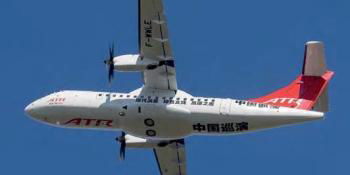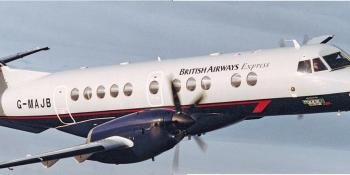Chen Chuanren reports from the latest iteration of Cope Tiger, the biggest exercise in Southeast Asia
MILITARY
Every year, the Republic of Singapore Air Force, Royal Thai Air Force and the US Air Force gather in Thailand for Exercise Cope Tiger, Southeast Asia’s largest air force exercise. Cope Tiger 2017 was opened in Singapore from December 6–9, 2016, when staff officers carried out a tabletop exercise at the Multinational Operations and Exercise Centre at Changi Naval Base. The key Field Training Exercise was held at the Royal Thai Air Force Wing 1’s Korat Air Base during March 20–31, 2017, with a combined 76 aircraft deployed by the three air forces.
Training for New Threats
Cope Tiger started in 1994 initially as a dissimilar air combat training exercise, but as partner air forces have increased in capabilities more complexities have been added into the annual war game.
Cope Tiger continues to revolve around a Large Force Employment exercise, with focus on air combat manoeuvring training. However, this year saw a focus on unmanned operations, network centric warfare and electronic warfare to reflect real and new forms of threats. Other traditional serials included combat search and rescue (CSAR), strike and ground-based air defence training.
Professional Exchange
Cope Tiger 2017 saw two major daily waves (morning and afternoon). Upon receiving their Air Tasking Order, pilots from the three nations took turns holding various appointments, such as Mission Commander, to plan and execute their assigned missions. They were supervised by a Mission Director, usually a senior officer, to ensure flight safety and that learning objectives for the mission were met.

US Air Force Exercise Director, Lieutenant Colonel James McFarland, said: “After they plan, they consult each other, watch the tapes [from the previous sortie] and anticipate possible faults or problems that might happen during the exercise and at the same time find the solutions to all of them. After the missions, they review the tape and have a debriefing to see the result for two to three hours each day.”
Like most air force exercises, all assets swap between Red and Blue air, although platforms such as the Republic of Singapore Air Force’s KC-135R could play the neutral White Air to refuel all participants.
Professional exchanges are not limited to aircrew, but extend to ground crew and maintainers, as well. The US Air Force F-15C and Republic of Singapore Air Force F-15SG detachments were parked across from each other and ground crew regularly exchanged best practices and maintenance standards between the two common airframes.
There were 730 flight hours clocked up from the 813 sorties flown during Cope Tiger 2017,
Royal Thai Air Force F-16 MLU
The host Royal Thai Air Force deployed the bulk of its order of battle to Korat Air Base, but its newer Saab JAS 39C and JAS 39D Gripens sat out the exercise. It is important to note that the Thai Gripen does not have the Link 16 datalink, but rather the indigenous Link-T (Thai) datalink developed by Saab and Thailand’s Savia satcom.
The Royal Thai Air Force’s three squadrons of Lockheed Martin F-16 Fighting Falcons spearheaded the fighter deployment, but the F-16 midlife upgrade (MLU) aircraft took centre stage.
The F-16A and F-16B MLU from 403 Squadron has brought new capabilities to the table since its debut last year. The first upgraded F-16 was rolled out in 2014 with new systems, including the Northrop- Grumman APG-68(V)9 radar, Link 16 datalink, the Joint Helmet Mounted Cueing System (JHMCS) and AAQ-33 Sniper advanced targeting pod.

Last year, the squadron achieved the exercise’s first Link 16 data link within the three participating nations, and network-centric warfare continues to be among the Royal Thai Air Force’s top goals.
The air force continued to test its new capabilities at this year’s Cope Tiger, pairing the JHMCS with its new Diehl BGT Defence IRIS-T air-to-air missile, which also made its first appearance in Cope Tiger 2017. The IRIS-T gave the Thais off-boresight capability and the ability to engage in a tighter envelope against opponent platforms that might have similar missiles like the AIM-9X Sidewinder.
Other assets, such as the L-39ZA, L-39ART and Alpha Jet, gave light attack and close air support capabilities, especially for CSAR missions with the Bell 412 and UH-1H helicopters.
US Pacific Air Forces
The US Pacific Air Forces returned to Cope Tiger with 12 F-15C Eagles from the 44th Fighter Squadron, 18th Fighter Wing based at Kadena Air Base, Japan. Pacific Air Forces usually represents the US Air Force in this exercise, but there are occasions when Air National Guard units are deployed from continental United States. About 220 US Air Force personnel took part this year.

Another US Air Force participant was a E-3B Sentry. This was the third consecutive year the Sentry took part in Cope Tiger and also the third time the three partners all deployed airborne early warning (AEW) assets to the exercise, the others being a Royal Thai Air Force Saab 340 Erieye and a Republic of Singapore Air Force G550 AEW.
Republic of Singapore Air Force
The Cope Tiger exercise airspace stretches 100 x 80 nautical miles (185 x 148km), which is one of the largest in the region and is much appreciated by a small country like Singapore. The Republic of Singapore Air Force trains regularly in Thailand, in both bilateral and unilateral exercises outside of Cope Tiger. It sent about 800 personnel to Cope Tiger this year, including reservist pilots and ground crew.
In a scaled-down presence from previous years, the Republic of Singapore Air Force deployed only 22 fixed-wing aircraft and no rotary-wing platforms. Previously, it has deployed either AS332/ AS532 Super Pumas or CH-47SD Chinooks to Korat to participate in the CSAR serials. MINDEF, the Singapore Ministry of Defence, said the lack of rotary platforms was part of an internal management of assets.
After the retirement of its Northrop Grumman F-5S and F-5T fighters in 2015, the Republic of Singapore Air Force now deploys all three F-16 squadrons to Cope Tiger, and five F-15SGs. The reduced presence of the F-15SG was likely due to preparations for their upcoming inaugural training deployment to Andersen Air Force Base in Guam.
Perhaps the most established and advanced unmanned air vehicle (UAV) operator in Southeast Asia, Singapore deployed three Israel Aerospace Industries Heron 1 systems from 128 Squadron to Cope Tiger just weeks after the type attained full operational capability. MINDEF says such training not only benefits Republic of Singapore Air Force UAV operators at the tactical level, but also raises the level of benefits at the operational level to improve combat readiness and strengthen interoperability between the three air forces.
UAV and ISR
The participation of UAVs is a relatively new element in Cope Tiger; the Republic of Singapore Air Force first deployed its Heron 1 in 2016. This year, the Herons were joined by the Royal Thai Air Force 401 Squadron flying the Aeronautics Defense Systems Aerostar UAV in a combined UAV training between the two nations.
Lt Col McFarland told the media: “This is also the first year that we’ve introduced an integrated and combined command and control intelligence, surveillance and reconnaissance cell centre. We take information of the battlefleld in real time, we digest that information, we process it and we make decisions based [on] it, which enables us to execute dynamic targeting.”
The cell takes in information from AEW platforms and creates a common air situation picture to sense the battlespace and coordinate for dynamic targeting and CSAR missions. The US Air Force E-3B and Republic of Singapore Air Force G550 AEW both possess electronic warfare capabilities and can passively detect air defence radar systems that are deployed across ‘Red Land’. Three Royal Thai Air Force ground control intercept officers were also invited to witness an airborne control mission on board the E-3B Sentry.

Air Defence Systems
Part of the Red Land in the exercise lay in the Royal Thai Air Force’s Chandy Range in Lopburi, about 86 nautical miles (160km) from Korat Air Base. Forty-five ground-based air defence systems from Singapore and Thailand were deployed across the area.
Two Republic of Singapore Air Force I-HAWK medium altitude surface-to-air missile batteries were supported by an array of low-level assets, comprising Royal Thai Air Force QW-2 man-portable air defence systems (MANPADS), Royal Thai Army Starstreak MANPADS, and Royal Thai Navy QW-18 MANPADS and Bofors LVS L/70 40mm anti-aircraft guns.
Enduring Friendship
The three air forces all agreed that Cope Tiger is crucial and a key enabler for close military ties between the three nations. Airmen and doctors from the air forces also participated in two civic programmes to provide healthcare, infrastructure and education supplies to schools around the air base.
Republic of Singapore Air Force Air Director Colonel Chan Ching Hao said: “The short-vision success for this exercise is to see effective air forces. Every participant must have [the] ability to fight, to plan, to have the opportunity to meet new challenges during the exercise. The successful conduct of the exercise has further enhanced our interoperability, and bears testament to the strong defence relationship shared between the three participating countries.”
Group Captain Supijjarn Thamwatharsaree, Royal Thai Air Force Air Director, said: “All of us hope to develop on the operational situations and to bring the new technologies into the exercise in the future. We also hope to develop or increase the standard of this exercise and military relations among the nations.
“Throughout the exercise, we emphasise learning from each other for future cooperation. Trust in each other will establish the peace and security in the region. Our friendship is beyond the horizon.”







